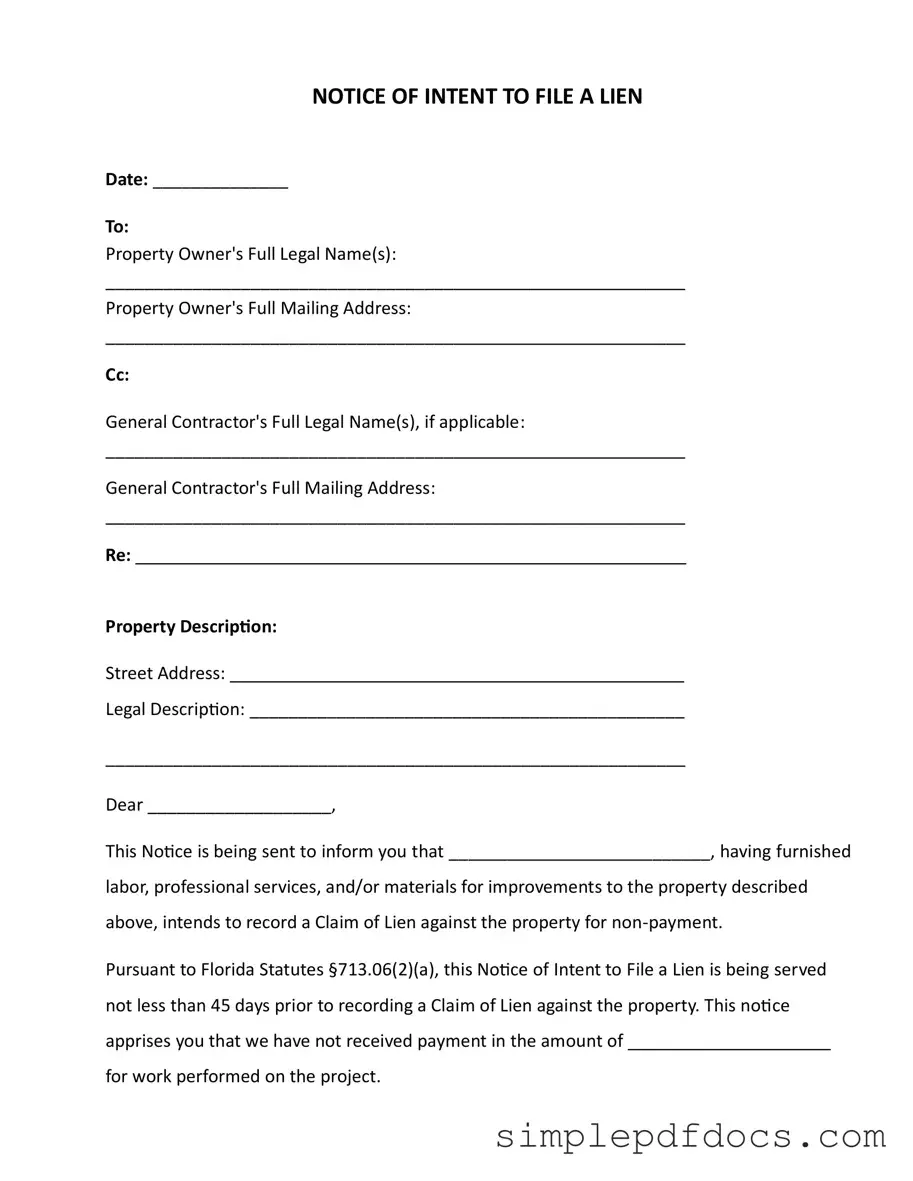Fill Your Intent To Lien Florida Form
The Intent to Lien Florida form serves as a formal notification to property owners that a contractor or service provider intends to file a lien against their property due to non-payment for services rendered. This notice is an important step in the lien process, ensuring that property owners are aware of potential legal actions that may follow if payment is not made. Understanding this form can help property owners take timely action to resolve payment disputes and avoid complications such as foreclosure proceedings.
Get Document Here
